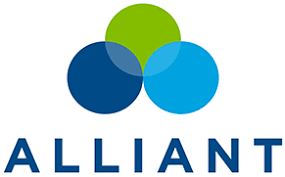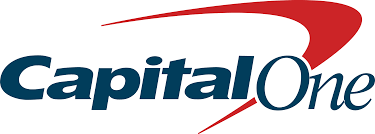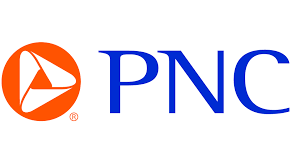Your kid’s first bank account should be a checking account. Some parents opt for a kid-friendly prepaid debit card instead, which isn’t technically a bank account but can perform the same basic functions.
Your kid’s second bank account should be a savings account, and it should come close on the heels of the checking account. As you teach your kid the value of a dollar and the importance of spending less than you earn, they’ll need a place to protect their money, build an emergency fund, set aside cash for longer-term goals, and move closer to becoming financially self-sufficient.
These savings accounts for minors can help them achieve all that.
Best Savings Accounts for Kids Under Age 18
These are the best savings accounts for minor children (kids under 18). All have at least one key strength that outshines the rest.
Best Overall: Alliant Credit Union Kids Savings Account
Best for Savings Goals: Capital One 360 Kids Savings Account
Best for General Money Management: PNC Bank 'S' is for Savings℠ Account
Methodology: How We Chose the Best Savings Accounts for Kids
We evaluated dozens of U.S. banks to build this list and ended up selecting only a handful of deserving savings accounts for kids. The key factors we considered include:
- Minimum age: Age 13 is the standard minimum age for a kid-friendly savings account, but some banks accept children at all ages and others cut off eligibility at age 6. We give priority to these more permissive accounts.
- Interest (APY): We expect savings accounts to pay competitive interest rates. Unfortunately, far too few kid-friendly savings accounts live up to this ideal. We searched hard for ones that do.
- Monthly service fees: They say you have to spend money to make money, but we believe you shouldn’t have to spend money to save money — especially not when you’re just starting down the road to financial self-sufficiency. Fortunately, monthly-fee-free kids’ savings accounts are abundant.
- Other fees: We dislike bank account fees in general, so we look for kid-friendly savings accounts that charge few if any. Most of these accounts make it easy to avoid fees with regular use, even if they charge for specific actions like stop-payment requests.
- Overdraft protection: Overdrafts happen to the best of us, and they’re more likely when you have less in the bank. So we give preference to savings accounts with built-in overdraft protection for linked checking accounts.
- Money transfer capabilities: For younger kids especially, seamless and fast money transfer is an essential bank account feature. We give preference to accounts that let adults rapidly top up accounts from external funding sources and kids to send money to friends (within preset limits).
- Online and mobile experience: Every account on this list is built for mobile users, whether the bank or credit union has a standalone app or just a mobile-friendly website. More generally, these accounts’ online banking capabilities are such that users should rarely if ever have to visit a branch.
- Balance requirements: Minimum balance requirements hinder kids’ efforts to build wealth, so we exclude any savings account initial or ongoing balance requirements over $100.
- Educational resources: Because daily savings account usage doesn’t expose kids to all the financial concepts they must understand to be self-sufficient, we give preference to banks and credit unions that offer robust educational resources and tools alongside them.
Kids Savings Accounts FAQs
Overall, kids savings accounts work the same way adult ones do. But these are the answers to at least some of the questions likely to arise as you look for a kid-friendly savings account for your youngster.
Who Owns a Kids Savings Account?
Kid-friendly bank account ownership depends on the account and the financial institution offering it.
The most common scenario is that the account is jointly owned between the a parent or guardian and the child. That means both are legal owners of the account and can deposit and withdraw funds held in it.
Accounts designed for kids under age 13 are more likely to be adult-owned rather than jointly owned. The kid has limited permission to use the account’s features, including depositing and withdrawing money, but doesn’t have any legal claim to the funds or right to access it if the parent decides to change the account permissions.
Can a Minor Open Their Own Savings Account?
Yes and no. Banks usually require an adult to participate in the opening process, if only to confirm they’ll be a joint owner on the account. That’s why some banks still have in-branch account opening requirements for kid-friendly accounts, though these are less common than they once were.
How Much Do Kids Savings Accounts Cost?
The best kids savings accounts charge no monthly maintenance fees or service charges. They have few fees in general and very few if any hard-to-avoid fees.
That said, few kids savings accounts are truly fee-free. Most have fees for specific account actions or events, such as wire transfers or overdraft protection transfers (though those may be charged to the linked checking account).
What Are the Limits on Kids Savings Accounts?
Kid-friendly savings accounts generally limit how much kid users can withdraw per day, week, or month. They may also allow parents to set custom transaction limits, which is useful as kids age and demonstrate more financial responsibility.
Since savings accounts aren’t really for daily spending, these controls can be less granular than those on kids checking accounts. Kids checking accounts may allow parents to set dollar limits on spending within merchant categories or even with specific merchants.
Can You Keep Your Kids Savings Account After You Turn 18?
Generally, yes.
If there’s an adult on the account, the bank may automatically remove them when the kid turns 18, leaving the child in full control of the account. Alternatively, the bank may convert the account to a different savings account with different features without interrupting access to funds.
Less commonly, the bank may allow the joint ownership arrangement to continue indefinitely. But there’s usually a time limit on how long that can last, and many young adults don’t want to share account ownership with their parents forever.
Check the account disclosure if you’re not sure how your bank handles this transition.
Final Word
Kids don’t learn how to manage their money from a textbook or classroom lesson. They learn by actually doing it, first (hopefully) with older role models’ help and later on their own.
That’s why opening that first bank account (or prepaid debit card) is such an important financial milestone for kids. It’s when money leaves the realm of grocery-aisle math lessons and overheard parental conversations and becomes tangible.
The right savings account can make all the difference. Low fees remove barriers to wealth-building. A competitive yield incentivizes saving and reinforces the value of money. Educational tools and calculators build on the real-world lessons and your understanding of the checking account you’ve likely linked to it already.
Fortunately, there are plenty of excellent kids savings accounts on the market right now.


